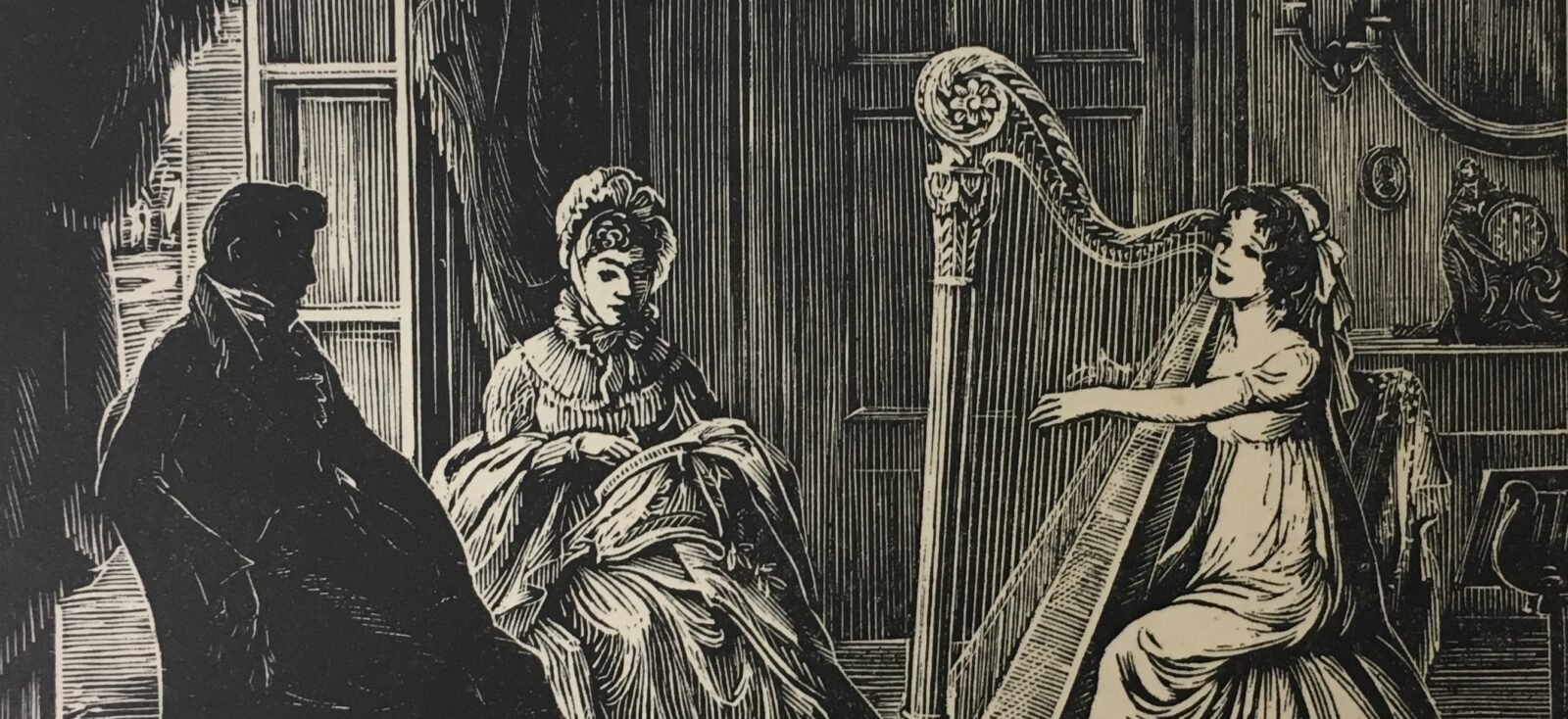She was a literary genius, and pioneered new writing techniques
Jane Austen’s novels are told in the third person by an omniscient narrator who has access to the thoughts and feelings of the characters. She makes use of minimal description, but instead focuses on the speech and action of her characters – if you open one of her novels at random and look at the page, you’ll see how much dialogue there is. Much of her work looks like a play script, which makes it ideal to read aloud.
Jane Austen also made extensive use of a style known as “free indirect discourse” or “free indirect style” – a literary technique in which the narrator’s voice appears to take on properties of the character’s voice to the extent that as a reader you are not quite sure who owns the words or thoughts (see below).
Jane Austen didn’t invent this writing style; however, she was one of the first writers to use it consistently throughout her work. Today, she is regarded as one of the pioneers of the style, anticipating writers such as Virginia Woolf and James Joyce, who extended the use of this style of writing in novels of the early twentieth century.
Free Indirect Style:
This is a literary style that allows the narrator’s voice to share with us the words, thoughts or feelings of the characters, without telling us that this is what they are doing. This means that the character’s thoughts or words slip into the third-person narrative, subtly shifting the perspective from that of the narrator to that of the character. It’s almost as though the narrator is the character for a moment, but they’re not – they’re still the narrator. Importantly, the speech or thought is not attributed to the character (for example with a ‘she thought’ or ‘he imagined’), so the reader must pick up on clues in the text to understand that these are the thoughts of the character, not the narrator.
Of course, Jane Austen doesn’t use this style with every character; she mainly reserves it for her heroine. It allows her to give us a vivid insight into the minds of her characters, but it can also be ambiguous: because the narrator does not tell us that they are sharing the thoughts of the character, we may not realise that this is what they are doing, and may mistake the point of view of a character for that of the narrator. This can be misleading, as the character in question may be wrong, prejudiced or mistaken. Austen often uses to ironic effect this kind of narrator/character intimacy.
For example, in the following two passages (from Chapter 16 of Pride & Prejudice), Elizabeth begins to form her opinion and feelings about Mr Wickham. In the first, her feelings are directly described, the author lets use know that they are her thoughts with the words ‘made her feel’:
‘the agreeable manner in which he immediately fell into conversation, though it was only on its being a wet night, made her feel that the commonest, dullest, most threadbare topic might be rendered interesting by the skill of the speaker.’
In the second passage, Jane Austen uses free indirect style to share Elizabeth’s feelings about Wickham with the reader.
‘There could be no conversation in the noise of Mrs. Phillips’s supper party, but his manners recommended him to everybody. Whatever he said, was said well; and whatever he did, done gracefully.’
Whilst this may sound like a statement of fact from the author, it is in fact a little more interesting. Not everyone would agree that Mr Wickham was so pleasing. This is in fact Elizabeth’s opinion of him, but it is presented by the narrator as part of their narrative. To understand this we must look at the context, and work it out for ourselves.
